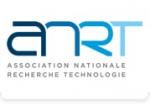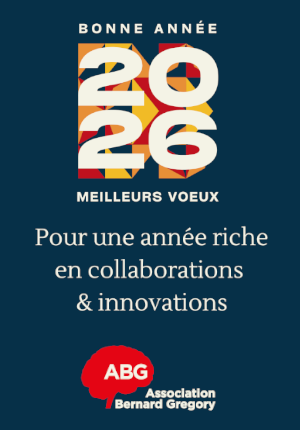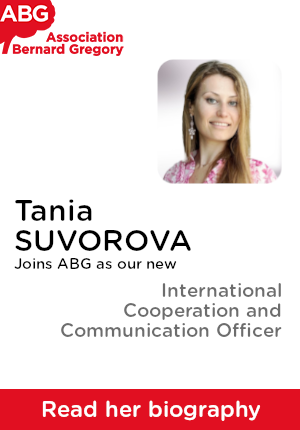Étude du transport des impuretés dans des plasmas à triangularité négative et positive // Study of impurity transport in negative and positive triangularity plasmas
| ABG-134324 | Sujet de Thèse | |
| 13/11/2025 | Financement public/privé |
CEA Aix-Marseille Université GEDS
Cadarache
Étude du transport des impuretés dans des plasmas à triangularité négative et positive // Study of impurity transport in negative and positive triangularity plasmas
- Physique
Physique des plasmas et interactions laser-matière / Physique corpusculaire et cosmos / Matière molle et fluides complexes / Physique de l’état condensé, chimie et nanosciences
Description du sujet
La fusion nucléaire dans un tokamak est une source d'énergie prometteuse. Cependant, une question se pose : quelle configuration plasma est la plus susceptible de produire de l'énergie nette ? Pour contribuer à y répondre, au cours de cette thèse, nous étudierons l’impact de la géométrie magnétique (comparaison entre triangularité positive et négative) sur le transport collisionnel et turbulent du tungstène (W). Les performances d’un tokamak dépendent fortement du confinement de l’énergie qu’il peut réaliser. Le confinement se dégrade fortement en fonction du transport turbulent et du rayonnement, ce dernier étant principalement émis par le W. Sur ITER, la quantité tolérée de W au cœur du plasma est d’à peine 0,3 microgrammes environ. Des expériences ont montré que la géométrie plasma à triangularité négative (NT) est bénéfique pour le confinement car elle réduit significativement le transport turbulent. Cette géométrie permet d'atteindre un confinement équivalent à celui obtenu avec la configuration ITER (mode-H en triangularité positive), sans les limitations d’une puissance seuil minimale et sans les relaxations du bord du plasma qui lui sont caractéristiques. Cependant, des questions subsistent : quel niveau de transport du W est rencontré en NT comparé à la géométrie positive ? Quel niveau de rayonnement peut-on espérer dans des futurs réacteurs en NT ? Pour contribuer à répondre à ces questions, au cours de cette thèse, nous évaluerons le rôle de la triangularité sur le transport des impuretés dans différents scénarios dans WEST. La première phase du travail est expérimentale. Ensuite, la modélisation du transport d’impuretés sera réalisée en utilisant des modèles collisionnels et turbulents. Une collaboration est prévue avec des experts internationaux en plasma dans des configurations NT, avec UCSD (États-Unis) et EPFL (Suisse).
------------------------------------------------------------------------------------------------------------------------------------------------------------------------
------------------------------------------------------------------------------------------------------------------------------------------------------------------------
Nuclear fusion in a tokamak is a promising source of energy. However, a question arises: which plasma configuration is most likely to produce net energy? In order to contribute to answering this, during this PhD, we will study the impact of magnetic geometry (comparison between positive and negative triangularity) on the collisional and turbulent transport of tungsten (W). The performance of a tokamak strongly depends on the energy confinement it can achieve. The latter degrades significantly due to turbulent transport and radiation (primarily from W). On ITER, the tolerated amount of W in the core of the plasma is about 0.3 micrograms. Experiments have shown that the plasma geometry with negative triangularity (NT) is beneficial for confinement as it significantly reduces turbulent transport. With this geometry, it is possible to reach confinement levels similar to those of the ITER configuration (H-mode in positive triangularity), without the need for a minimum power threshold and without the associated plasma edge relaxations. However, questions remain: what level of W transport is found in NT compared to a positive geometry? What level of radiation can be predicted in future NT reactors? To contribute to answering these questions, during this PhD, we will evaluate the role of triangularity on impurity transport in different scenarios in WEST. The first phase of the work is experimental. Subsequently, the modeling of impurity transport will be carried out using collisional and turbulent models. Collaboration is planned with international plasma experts in NT configurations, with UCSD (United States) and EPFL (Switzerland).
------------------------------------------------------------------------------------------------------------------------------------------------------------------------
------------------------------------------------------------------------------------------------------------------------------------------------------------------------
Pôle fr : Direction de la Recherche Fondamentale
Département : Institut de recherche sur la fusion par confinement magnétique
Service : Service de Physique des Plasmas de Fusion
Laboratoire : GEDS
Date de début souhaitée : 01-10-2026
Ecole doctorale : Physique et Sciences de la Matière (ED352)
Directeur de thèse : GUIRLET Rémy
Organisme : CEA
Laboratoire : DRF/IRFM//GECF
URL : https://irfm.cea.fr/en/presentation-of-west/
------------------------------------------------------------------------------------------------------------------------------------------------------------------------
------------------------------------------------------------------------------------------------------------------------------------------------------------------------
Nuclear fusion in a tokamak is a promising source of energy. However, a question arises: which plasma configuration is most likely to produce net energy? In order to contribute to answering this, during this PhD, we will study the impact of magnetic geometry (comparison between positive and negative triangularity) on the collisional and turbulent transport of tungsten (W). The performance of a tokamak strongly depends on the energy confinement it can achieve. The latter degrades significantly due to turbulent transport and radiation (primarily from W). On ITER, the tolerated amount of W in the core of the plasma is about 0.3 micrograms. Experiments have shown that the plasma geometry with negative triangularity (NT) is beneficial for confinement as it significantly reduces turbulent transport. With this geometry, it is possible to reach confinement levels similar to those of the ITER configuration (H-mode in positive triangularity), without the need for a minimum power threshold and without the associated plasma edge relaxations. However, questions remain: what level of W transport is found in NT compared to a positive geometry? What level of radiation can be predicted in future NT reactors? To contribute to answering these questions, during this PhD, we will evaluate the role of triangularity on impurity transport in different scenarios in WEST. The first phase of the work is experimental. Subsequently, the modeling of impurity transport will be carried out using collisional and turbulent models. Collaboration is planned with international plasma experts in NT configurations, with UCSD (United States) and EPFL (Switzerland).
------------------------------------------------------------------------------------------------------------------------------------------------------------------------
------------------------------------------------------------------------------------------------------------------------------------------------------------------------
Pôle fr : Direction de la Recherche Fondamentale
Département : Institut de recherche sur la fusion par confinement magnétique
Service : Service de Physique des Plasmas de Fusion
Laboratoire : GEDS
Date de début souhaitée : 01-10-2026
Ecole doctorale : Physique et Sciences de la Matière (ED352)
Directeur de thèse : GUIRLET Rémy
Organisme : CEA
Laboratoire : DRF/IRFM//GECF
URL : https://irfm.cea.fr/en/presentation-of-west/
Nature du financement
Financement public/privé
Précisions sur le financement
Présentation établissement et labo d'accueil
CEA Aix-Marseille Université GEDS
Pôle fr : Direction de la Recherche Fondamentale
Département : Institut de recherche sur la fusion par confinement magnétique
Service : Service de Physique des Plasmas de Fusion
Profil du candidat
Physique
Postuler
Fermer
Vous avez déjà un compte ?
Nouvel utilisateur ?
Besoin d'informations sur l'ABG ?
Vous souhaitez recevoir nos infolettres ?
Découvrez nos adhérents
 Ifremer
Ifremer  ASNR - Autorité de sûreté nucléaire et de radioprotection - Siège
ASNR - Autorité de sûreté nucléaire et de radioprotection - Siège  ANRT
ANRT  ONERA - The French Aerospace Lab
ONERA - The French Aerospace Lab  CASDEN
CASDEN  CESI
CESI  Généthon
Généthon  MabDesign
MabDesign  TotalEnergies
TotalEnergies  Institut Sup'biotech de Paris
Institut Sup'biotech de Paris  ADEME
ADEME  SUEZ
SUEZ  Tecknowmetrix
Tecknowmetrix  Servier
Servier  Aérocentre, Pôle d'excellence régional
Aérocentre, Pôle d'excellence régional  Groupe AFNOR - Association française de normalisation
Groupe AFNOR - Association française de normalisation  Laboratoire National de Métrologie et d'Essais - LNE
Laboratoire National de Métrologie et d'Essais - LNE  Nokia Bell Labs France
Nokia Bell Labs France  PhDOOC
PhDOOC  MabDesign
MabDesign




